Nail Tip Of The Week: Preventing Bubbles
 Your Nail Tip Of The Week is inspired by a reader letter. It’s an issue that has plagued us all: Air Bubbles. You can fix a smudge, remove polishing mistakes and even refresh a dull top coat but getting rid of those pesky bubbles is impossible.
Your Nail Tip Of The Week is inspired by a reader letter. It’s an issue that has plagued us all: Air Bubbles. You can fix a smudge, remove polishing mistakes and even refresh a dull top coat but getting rid of those pesky bubbles is impossible.
Your best defense is a good offense but without knowing the causes, where do you begin.
1. Air flow – Sitting near an open window, in front of or under a fan is the surest way to bring those babies to the surface. So even if it’s hot and nasty, close those windows and turn off those fans.
2. Moisture – I always wash my hands before painting my nails but excess moisture on your nail plate means impending bubble-doom. Wait a good 5 minutes after washing and rub a piece of cotton or paper towel around the edges just to make sure.
3. Excess dirt/oil – A tip I picked up from a lovely MUA nail boarder is to wipe your nails with vinegar before applying base coat or polish. Unlike some nail polish removers that contain moisturizing ingredients, straight up white vinegar will clean your nail bed without leaving any residue.
If you follow these steps and still end up with bubbling, it could be time to switch up your products. In the NYX South Sea shot above the bubbles were caused by using an inferior base and top coat. No amount of prep and caution could have prevented that.

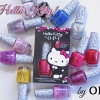
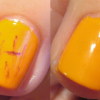
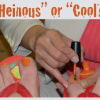
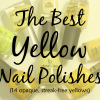
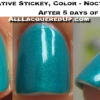




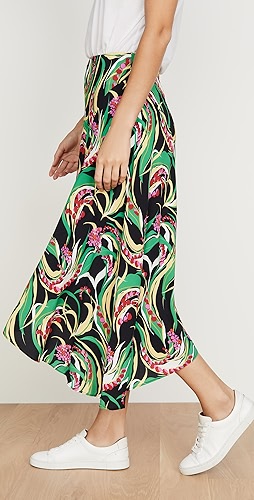




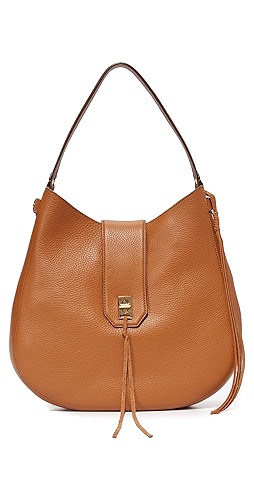


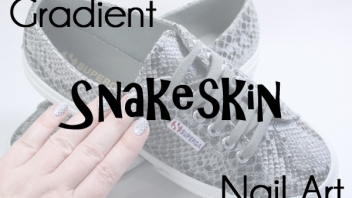
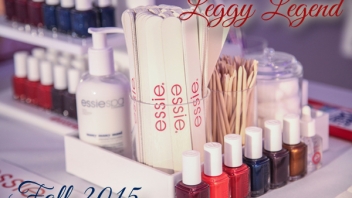
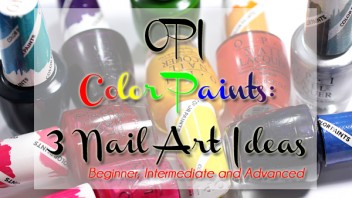
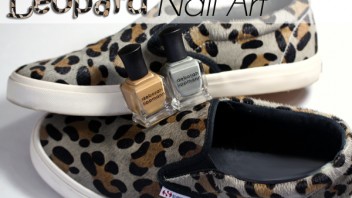
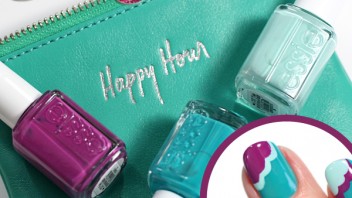
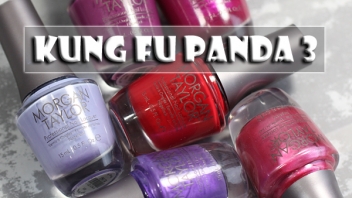
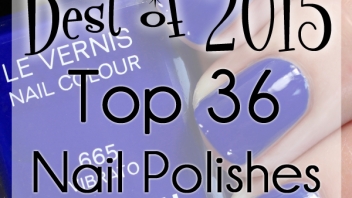
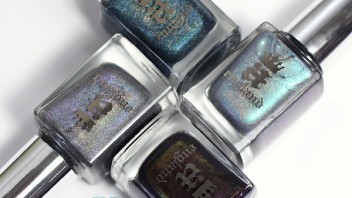
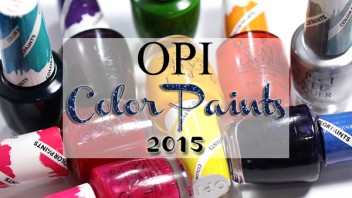
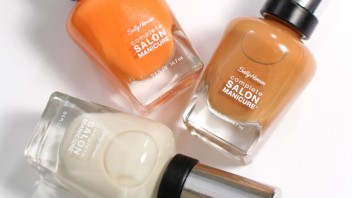
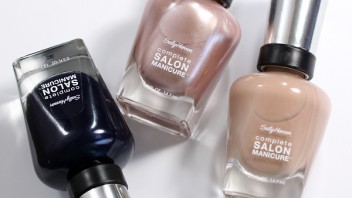
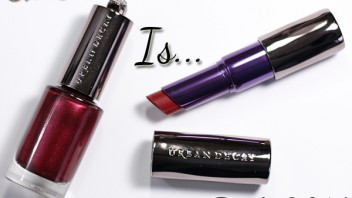
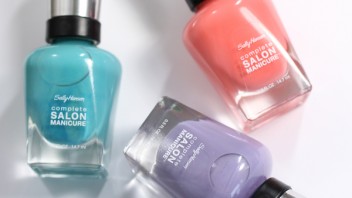
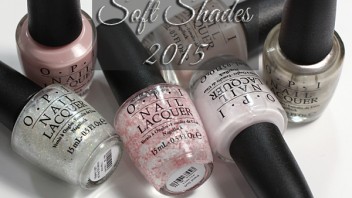
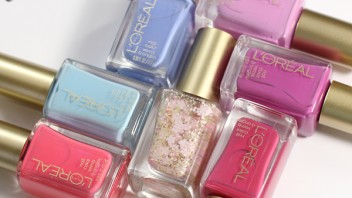


Let me bow down to the polish gods!
The vinegar did the trick! I've carefully 'rolled' stayed away from even a slight breeze, waited almost an hour between layers before applying the next coat and still I would get bubbles! That is until the vinegar made them vanish! All gone!Now I love my painted nails!
I have read that your polish will bubble if you let it dry while in direct sunlight!
I don’t know if it’s true, but it’s worth mentioning at least.
Interesting theory, thanks for sharing!
I can see how direct sunlight could do it, as I KNOW doing a fresh manicure in excessive heat (like 80 degrees plus) leaves me with bubbles and/or cracks every time.
I always found that when I am impatient and use the hairdryer to speed up the the drying process of my nail polish, that I inevitably end up with bubbles.
I finally got smart and paid attention to my manicurist…I buff! Use a 4-sided, fine-grit buffing block before polishing. Wash away the “sand,” then you’re good to go. I’ve seen nary a bubble since I learned this.
Buffing isn’t exaclty smart, though I understand what you (and/or your manicurist) is intending to do. When buffing (buffering? ‘Scuse me, language barrier) you scrape away the top layer of your nail, causing the more vulnerable lower layers to be exposed. Shmearing on harsh chemicals (which is what nailpolish really is. Try coating a plastic folder-map; the plastic will actually deform due to the chemicals; the nailpolish dissolves it and then kind of blends together with it.) Imagine rubbing that on your unprotected nails…. Doesn’t really seem like the smartest thing to do.
However, I believe you mean smoothing out your nails will further the cause of ‘only bubbles in my champagne’ (not on my nails). Smoothing out the surface of your nail will ensure that no air can be caught behind little ridges or pieces of stuck dirt. Well, wash properly, use vinegar (guh-reat tip!), and apply a base coat in a nice and even manner. In my experience, base coats dry in no time, and don’t ever bubble, so you’ll have a nice and even surface to continue from (and thus less bubbles), as well as protect your nails against pigmentation from the nailpolish.
Also, try coating in thin layers. Bubbles will also tend to form when the top part of your freshly applied polish is already drying/dried, but the polish underneath this layer is still far from dried up. The lower part will then keep on drying, which happens through the evaporation of the chemicals in the polish that allow it to be in liquid form. These vapors then have no where to go and end up pressing against the already dried part of the polish. Pressure mounts and KABLAM!! Bubble-apocalypse commences. (check out any type of bubble floating up in a liquid or viscous substance: the bubbles pushes up against the top layer which offers a lot of counter pressure, the bubbles lifts ‘out’ of the substance, until it’s pressure outweighs the pressure keeping it just below the ‘surface’ (which has liften), and then the bubble will burst).
Also, sunlight, or any type of heat for that matter, will speed up the drying process of the surface of the polish, actually causing bubbling, even if beforehand you didn’t have any troubles with it. Letting thin layers of polish fully dry one by one will take just as long as letting one thick gloopy layer dry completely (if not shorter), so there is no need to opt for this one thick icky layer in order to save time. It will mess up your manicure, and well, you may very well end up losing time because you have to redo your nails because they because texturised if your nail accidentally hits a rougher surface.
Hope this was sort of help full =)
I know this is a bit of topic , but sometimes when i do my nails, the nail polish has strands everywhere. Kinda like when you use a hot glue gun and the glue leaves these strands everywhere. this has been happening to alot of my nail polishes. how do i stop it!!
Are the polishes older? Sometimes that happens when they’ve thickened from age or exposure to air. You could try adding some polish thinner to make the consistency better. In the future, make sure you tighten the caps on your polishes well and keep them away from extreme temps. That will age your lacquer in a hurry.
No matter what brand of nail polish I buy, and no matter how long I let the polish dry between coats, there are ALWAYS bubbles! It is so annoying, like you think you have your nails looking so pretty only to realize, OF COURSE there’s bubbles!! And why does it take forever to dry? All my nail polishes are relatively new.And brand name! I wait 2 hours and it is still not dry. No matter how careful I try to be, my nails always get messed up! And when I go to bed,even though it was 2 or 3 hours ago when I did my nails, they get sheet marks!! I guess I have bad luck with nail polish.Maybe I should try those nail stickers. If anyone knows how to fix any of my problems, that I already googled and found nothing helpful about, that would be awesome! Thanks!
I’m in the same boat as you, Mrs.NailsALWAYSgetbubbles!!! I have the exact same problems. I use exactly the same polish and tools they use in the nail salons and always get bubbles and sheet marks! I don’t get it.
I’ve read that humidity and moisture in the air causes bubbles, today was very humid and even though I closed the windows and turned on the air conditioner my polish bubbled. Best bet, wait for a dry day.
After you have removed your polish, wash your hands thoroughly. Next Wipe your nails with alcohol to remove any residue and prepare your nails for the polish. If you can find a product called “Chip Skip”, apply that and then apply base coat, polish and finish off with top coat. Chip skip prevents chipping for at least one week.
The reason why your nail polish bubbles no matter what is because you shake it and apply it immediately. You must never do that, if you must mix, rub carefully between your palms. Shaking vigorously creates bubbles which gets on your nails. Also you get sheet marks because your base coat and first nail polish coat do not properly get dry. It is important that your first coat is even and light. Make use of slow long strokes when you apply, rather than short quick strokes.Laying it on too heavy will make it almost impossible to get it dry. Hope this helps.